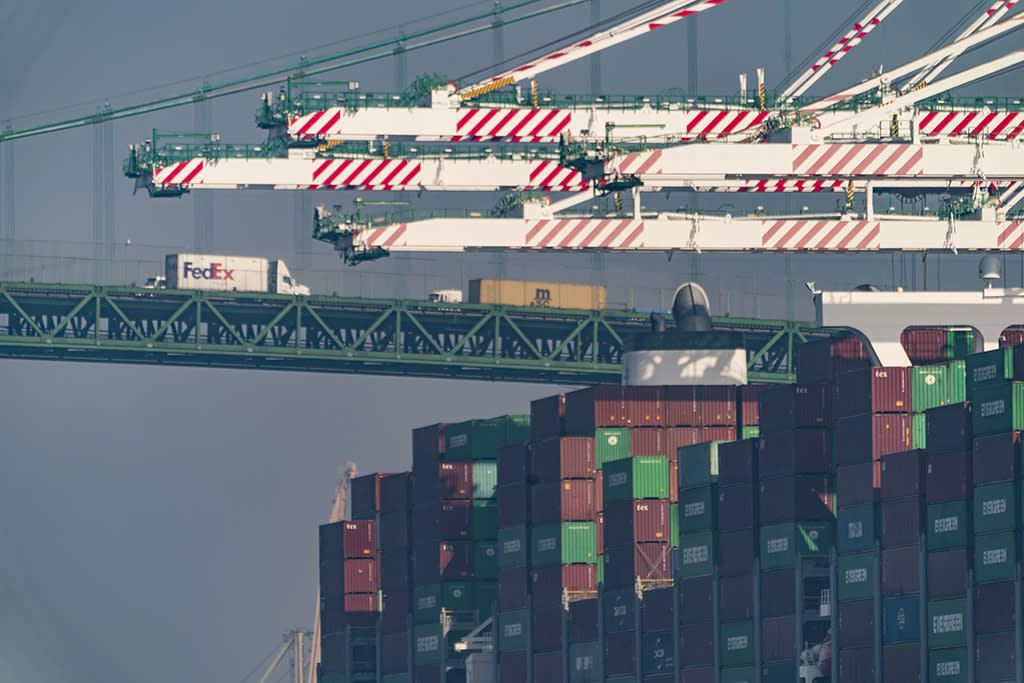California Governor Approves $2.3 Billion for Port Improvements Amid Supply Chain Struggles

Calif. Governor Gavin Newsom has signed the state’s upcoming fiscal year budget, which includes $2.3 billion for port infrastructure improvements and upgrades amid months of port delays and supply chain woes.
One of the main parts of the budget sets aside $110 million for creation of a new Goods Movement Training Campus at the San Pedro Bay port complex.
More from Footwear News
U.S. Ports Remain Near Record Volume as Retailers Continue to Grapple With Inventory Challenges
Lamo Reveals Its Tricks for Navigating the Supply Chain Crisis
Lululemon and H&M Group Among Donors for $250 Million Fund to Decarbonize Fashion Supply Chains
According to a statement from the Port of Los Angeles, it is working along with the Port of Long Beach to create the Goods Movement Training Campus, which will focus on worker skill development to address the rapidly changing needs of the logistics industry. It will also serve as an industry resource for training workers on emerging green and zero-emission technologies.
“We commend Governor Newsom and the state legislature for their foresight and leadership in making this much-needed commitment to create a more resilient California freight system,” Gene Seroka, executive director of the Port of Los Angeles, said in a statement. “Continual investment in port infrastructure, sustainable technologies and jobs creation is essential to maintaining our competitiveness, now and in the future.
“Workforce development is an equally critical component of the goods movement sector,” added Seroka. “We are thrilled to have the Governor’s support of our initiative to create the nation’s first training campus to benefit our industry. The Port of Los Angeles plans to donate land and invest millions of dollars of our own capital in this facility.”
In addition to the training campus investment, the Governor’s $2.3 billion plan for ports includes $1.2 billion for port-related projects that increase goods movement capacity on rail and roadways serving ports and at port terminals, including rail yard expansions, new bridges and zero-emission modernization projects.
What’s more, $760 million will be allocated for zero-emission equipment and vehicles, including human-operated zero-emission port equipment, short-haul (drayage) trucks and infrastructure.
Plus, $30 million will be used by the Governor’s Office of Business and Economic Development to fund operational and process improvements at ports. According to the budget proposal, these grants will focus on enhancing goods movement, reducing congestion, improving data interconnectivity between ports, and creating opportunities to increase cargo volumes by promoting and building supply chain efficiencies.
And finally, $40 million to enhance California’s capacity to issue Commercial Driver’s Licenses, allowing for more truck drivers to serve the San Pedro Bay port complex.
The busiest seaport in the Western Hemisphere, the Port of Los Angeles facilitated $294 billion in trade and handled a total of 10.7 million container units in 2021, the busiest calendar year in the port’s 115-year history.
This news comes one month after the National Retail Federation (NRF) and consulting firm Hackett Associates said that U.S. ports are expected to remain “near record volume” throughout the summer. “We’re in for a busy summer at the ports,” NRF VP for supply chain and customs policy Jonathan Gold said in a statement at the time. “Back-to-school supplies are already arriving, and holiday merchandise will be right behind them.”
But the “big wild card” for the future of America’s supply chain is what will happen with West Coast labor negotiations, now that its current labor contract officially expired on July 1. According to Reuters, negotiations will continue on a new labor contract for the more than 22,000 workers at U.S. West Coast ports. Reuters said industry leaders and the White House are watching the high-stakes talks closely. The agreement will include 29 Pacific Coast ports from California up to Washington state, ports that bring in up to 40% of America’s imports.
Best of Footwear News
Sign up for FN's Newsletter. For the latest news, follow us on Facebook, Twitter, and Instagram.

